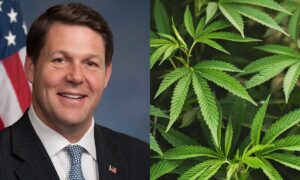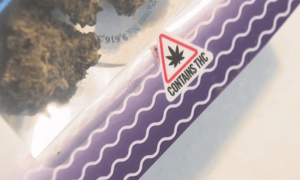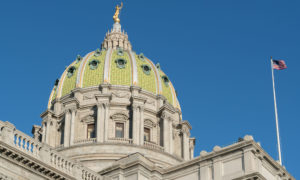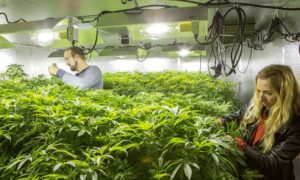Marijuana policy has been changing radically. Beginning with Colorado and Washington, eight states — including California — have now legalized not just medical use but large-scale commercial production, marketing, and sales for non-medical use. Canada expects to do the same next year. These developments are accelerating the decline in prices that has been underway since the Obama administration’s 2009 decision to tolerate state legalizations of first medical and then recreational marijuana, despite federal laws prohibiting all use. Legal marijuana now flows readily across state borders; a year’s supply for a heavy user weighs about as much as one 22-ounce can of beer. And once people can easily obtain marijuana next door, more states will legalize.
The federal government will be forced to either shut down these state-legal operations or seek to bring order to the dysfunctional contradictions between state and federal law by legalizing marijuana nationwide. Taxes figure prominently in these debates, but no one, it seems, knows how to tax marijuana prudently. The states leading the legalization charge have enacted primitive taxes that will fail as marijuana prices fall because they are computed as a percentage of value. As the Trump administration weighs its options, it is worth thinking carefully about what the best tax regime would look like, and what limitations even the best regime will face.
Some legalization advocates compare marijuana to alcohol. Yet, in Tom Babor’s memorable phrase, “alcohol is no ordinary commodity.” Neither is marijuana. While marijuana has tens of millions of happy occasional users, they account for a trivial share of industry sales. Consumption is concentrated among the smaller number of high-frequency users; half of marijuana is consumed by people with a medically diagnosable substance-use disorder, and these individuals are disproportionately poor and less educated. Policy — including tax policy — should be designed to protect these problem users from exploitation by industry and from their own bad choices, rather than cater to the convenience of occasional users.
Lower prices for marijuana have been shown to increase use, particularly for younger and heavier marijuana users. Hence, a major goal should be to keep after-tax prices from falling too sharply (ideally by no more than 50%). Dictating that outcome only via minimum-pricing rules, however, would let industry pocket excess profits. Propping up prices with excise taxes — a favored strategy for tobacco — would achieve the public-health goal of discouraging excessive marijuana use, while relieving the public of having to finance government via other less-popular and more-counterproductive taxes.
Alas, taxing marijuana is not simple. Federal legalization — specifically, allowing for-profit corporations to sell marijuana — would unleash a dynamic market that would evolve precipitously and unpredictably, with the potential for aggressive anti-tax lobbying, price collapses, rapidly changing marijuana-derived products, and black- and gray-market tax evasion. All this would create complicated secondary goals: Taxes would need to be nearly uniform across states; they would need to cover a wide variety of products; and they would need to increase dramatically over time.
These challenges and corresponding goals present unexpected pitfalls for approaches that at first seem sensible. Four principles could help marijuana-tax models avoid such traps: the equity principle, the “Goldilocks” principle, the complexity principle, and the political principle.
Together, they imply that tax policy will need to adjust dynamically to changing circumstances, and nimble tax policy is not what lawmakers are known for. Two options exist that could achieve the necessary flexibility, but neither would be easy to implement. This raises the question of whether it is wise to legalize marijuana like alcohol when there are forms of legalization that may better serve the public interest.
EQUITY ACROSS STATES
Marijuana can be grown anywhere. Ten thousand acres — about 15 square miles — can supply all the THC (tetrahydrocannabinol, the principal psychoactive component of cannabis) consumed in the entire country. So after national legalization, the industry will gravitate to states with low production costs.
The cannabis plant can yield several thousand pounds of conventional marijuana per acre, plus leaves that can be used to produce extracts. Comparable crops cost $5,000 to $20,000 per acre to grow. So with federal legalization, farming costs can be expected to fall below $20 per pound for a product that now “wholesales” for less than $1,500 a pound — and sold for over $5,000 a pound not long ago. Assuming one pound produces about 2,000-3,000 hours of intoxication, farming costs could fall below a penny per hour of intoxication.
The industry’s production costs will therefore be driven by regulations and taxes, not fertilizer, land, or labor. Production and associated jobs will move to whatever state offers the most business-friendly environment, including the lowest taxes. Expect a race to the bottom as states compete to host industry jobs.
A similar race dooms state-based retail taxes. To see why, consider a tax that works out to the equivalent of $4 per gram on “flowers” (the traditional smokeable form of marijuana). If total consumption remains around 6,000 metric tons per year (not an unlikely scenario even with national legalization, as increases in THC consumption continue to be offset by rising potency in marijuana products), such a tax could produce annual revenue of around $24 billion — not a panacea for budget problems, but nothing to sneeze at either.
In states where marijuana is legal, recent prices for high-quality flowers have hovered around $10-$15 per gram, but once national legalization allows professional farmers to replace criminals and artisanal growers, the production costs and hence the pre-tax price of basic, no-name marijuana could be remarkably low. Farming costs of $20 per pound work out to only a nickel per gram. Distribution, regulation, and testing will add to the cost, but not very much; consider that typical teas sell in grocery stores for $5 an ounce, which is less than 20 cents per gram.
Of course, some companies will promote expensive, organic, hand-cultivated premium varieties for affluent and once-a-week users and for gifts, but those will be niche markets. Eighty percent of marijuana is consumed by daily and near-daily users; 60% by people with a high-school education or less. Most will shop based on price, more like customers at Walmart than at Whole Foods. Expect the marijuana equivalent of microbrews, but also expect most intoxication to come from the marijuana equivalent of Budweiser, with prices in the absence of taxes falling below $1-$2 per gram in the long run.
So a $4-per-gram tax would only be slowing anticipated declines in price, not driving prices above where they are now — let alone where they were a decade ago. And taxes would eventually account for most of the cost to consumers, as they already do for cigarettes in many European countries.
As a practical matter, only the federal government could collect such a tax. State-to-state variation in cigarette taxes is roughly $4 per pack, and that disparity has engendered considerable gray-market smuggling from states like Virginia (with the lowest state tax at $0.30 per pack) to New York (with the highest at $4.35 per pack). But a pack of cigarettes weighs 20 grams. Trying to collect a $4-per-gram marijuana tax in one state when another state charges little would create smuggling opportunities equivalent to an $80 difference between states in the price of a pack of cigarettes.
Furthermore, marijuana’s production and high-level distribution are still dominated in most states by criminals operating in black markets. Legalization would bring supply above board, thereby “laying off” more than 100,000 professional criminals. Those criminals would respond to losing that income in diverse ways, but one would inevitably be trying to traffic marijuana for purposes of tax evasion. Taxes need to be managed cleverly to avoid committing an error akin to that of the Coalition Provisional Authority’s mistake in Iraq when it laid off all Ba’ath party members without considering what alternative employment they might seek.
Without a revolution in public attitudes about enforcement and penalties for tax evasion, interstate price differentials of even $1 per gram are likely unsustainable. That effectively means the federal government will have to be the primary taxing authority.
THE GOLDILOCKS PRINCIPLE
The point of legalization is to substantially eliminate the black market and its attendant ills. Literal eradication is a stretch; after all, there are still some moonshiners, and when 21-year-olds buy alcohol for 20-year-olds, that is technically illegal diversion. But if even one in four criminal traffickers keep their jobs after legalization, the policy will have failed.
Hence, for legalization to succeed, the after-tax legal market must win the price war against the black market. The RAND Corporation’s Drug Policy Research Center surveyed heavy marijuana users about where they’d buy drugs under various scenarios, and how much they would be willing to spend. While a few ethical or risk-averse people said they’d pay much more for marijuana that is “legal, labeled, and tested for pesticides and other contaminants,” most wouldn’t pay more than a few dollars per gram over the black-market price; people who said they’d buy whatever was cheapest accounted for fully one-third of consumption.
So it is possible to err by making taxes — and hence prices — too high, but for several reasons it would also be an error to make taxes too low. One is that the federal government runs enormous chronic deficits, and is unwilling to increase rates on existing taxes. Low marijuana taxes would squander a rare opportunity to broaden the tax base.
Another is tactical. The majority of Americans answer yes to the survey question, “Do you support legalizing marijuana use?” But more than one-third say no, and probably a greater proportion would oppose creating a for-profit marijuana industry. Higher taxes may be a quid pro quo for winning swing voters’ support for legalization.
A third is the traditional argument for “Pigouvian” taxes to lessen negative “externalities” associated with certain products. Marijuana can harm third parties, for example, through impaired driving. And if marijuana makes consumers less productive, that is a collective concern. Higher taxes would help account for such externalities.
A fourth, non-traditional but important argument is to control “internalities” — the harms users inflict upon themselves. Economists differ on whether harms to friends and families are externalities or internalities, but either way, mitigating them is an argument for higher taxes.
The concern with cheap marijuana is not that tens of millions more Americans might smoke marijuana once or twice a week. That would not matter much, because occasional use is, by and large, not terribly harmful. Rather, the concern is that millions more would become habitual users. Over the last decade or so of liberalizing policy, the number of people who report using marijuana at some point within the past year has increased moderately, but the number reporting heavy use has soared. In 1992, fewer than one million Americans self-reported daily or near-daily use of marijuana; by 2014, the figure had ballooned to 7.8 million. Half of the marijuana used in the U.S. is consumed by people who spend more than half their waking hours intoxicated.
Whatever one thinks about the long-term consequences of chronic heavy use, acute marijuana intoxication can interfere with the ability to perform useful and even necessary tasks. Marijuana is not a cognitive-performance enhancer. And while we welcome low prices for most consumer goods — if health care and rent were cheap, it would make life a lot easier for most people — that approach may not apply to “temptation goods.” Suppose people could buy essentially unlimited candy and desserts for 50 cents a day. Would that be a good thing? Maybe not. Lots of Americans already struggle with their weight, and consumption tends to go up when prices fall.
Libertarians may want prices to be as low as possible even for temptation goods. But the internalities argument goes as follows: Marijuana is a dependence-inducing intoxicant that leads many users to systematically make bad decisions that harm themselves as well as third parties; more than four million Americans report suffering enough problems with chronic marijuana use to meet clinical criteria for a substance-use disorder.
Chronic drug use involves repeatedly ingesting chemicals that bind to one’s neuro-receptors — literally altering the brain in ways that are visible in brain scans. Changes in the brain’s reward circuitry can compromise the neural system that normally helps rational actors successfully negotiate free markets. Even if each dose considered on its own seems appealing, regular drug consumption can leave long-term users regretful. The phrase “drugs hijack the brain” is sensationalistic, but not altogether wrong. So there is nothing illogical about adopting a libertarian perspective toward conventional consumer goods but making an exception for temptation goods, particularly for artificially introduced neurotransmitters and their chemical cousins.
To be sure, taxing to protect the minority for whom cheap marijuana would trigger habitual use is paternalistic, and it sacrifices the interests of the majority whose use would not create such problems. But the sacrifice would not be large: A $5-per-gram tax would cost someone who smokes a half-gram joint every weekend only $125 a year. Furthermore, the taxes would not actually increase out-of-pocket costs, but merely lessen the decline in price that would inevitably accompany federal legalization. So even with high taxes, legalization would still save marijuana users money.
ACCEPTING COMPLEXITY
H. L. Mencken once said, “For every complex problem there is an answer that is clear, simple, and wrong.” That quote applies to legalization generally. It is naïve to think legalization boils down to a simple yes-or-no question, or that legalization means everything will be exactly as before except that people will no longer be arrested. But Mencken’s quote applies also to the specific matter of how to tax marijuana.
A first impulse might be to say, “If you want prices to be $6 per gram when the cost is $1 per gram, just make the tax $5 per gram.” Alas, it’s not that simple. Weight-based taxes create incentives to sell high-potency forms of marijuana. Potency is already up: Flowers sold in Washington state’s legal market now average over 20% THC, whereas the average potency of cannabis (at least the cannabis discovered and confiscated by law enforcement) did not rise above 5% until 2001. Furthermore, the state-legal industry is now promoting the sale of concentrated cannabinoids. This is because marijuana concentrate is easy to extract via automation, and it offers greater economies of scale. It also appeals to a growing market segment. In Washington, marijuana concentrates used for vaping, dabbing, or mixing into edibles now average over 60% THC. These concentrates should bear more tax than $5 per gram.
We might try assessing taxes per unit of THC, but whereas there is only one psychoactive molecule in alcohol, marijuana contains scores of psychoactive compounds, and measuring even THC alone is complicated. Alcoholic beverages are “miscible” — meaning they form homogenous mixtures — but THC content varies from strain to strain and from flower to flower on the same plant. Often, marijuana products’ actual contents differ substantially from what their labels promise, so no jurisdiction has yet attempted to tax cannabinoid content.
Most jurisdictions simply tax marijuana as a percentage of value, such as Washington state’s tax of 37% of the retail price. Such ad valorem taxes will decline over time as prices fall — and that’s exactly the wrong direction. If 37% of $10 per gram is close to the “right” tax level, then 37% of $1 per gram is not. Furthermore, taxes on value can be dodged by “bundling” (e.g., using a cover charge to subsidize a bar’s sale of low-priced marijuana) or using marijuana as a “loss leader” to attract customers. (Convenience stores could sell cheap marijuana to boost sales of gas or corn chips. Restaurants could even give away free marijuana — the way bars offer patrons salty nuts — to induce customers to order more food.) Standard discounts for employees or for quantity would also reduce tax costs. An ad valorem tax may therefore be a perfectly natural “starter tax” for early-legalizing states. It would not, however, be adequate as the main tax after national legalization.
There is yet another complexity, as health risks vary by product form. Marijuana smoke is unhealthy; it literally contains carcinogens. Marijuana-infused edibles and beverages tend to foster overconsumption, especially the candies and sodas that appeal to youngsters. Many vaping pens are shoddily made, exposing users to heavy metals, and the unregulated production of hash oils often leaves behind flammable solvents that can be hazardous. In principle, differential tax rates could nudge consumption toward less risky product forms. However, the science base needed to quantify how risks vary by product form and cannabinoid content is in its infancy.
Parallel considerations apply to indirect effects on other substances. If increased marijuana use substitutes for abuse of alcohol, tobacco, or other drugs, that would be an argument for lower taxes; if it turns out to be a complement that stimulates greater use of those substances, that’s an argument for higher taxes. The current evidence concerning indirect effects is split right down the middle for alcohol; for tobacco, it suggests complementarity; and while there are a few peer-reviewed articles suggesting that medical marijuana could reduce problems with opioid abuse, that debate is far from settled. What’s important for the present argument is that, as better evidence becomes available, taxes should be adjusted to reflect that new information.
Marijuana taxes will thus not only need to increase over time, but the structures affecting revenue bases will need to be flexible as products evolve and knowledge of their relative risks improves. More generally, the taxes will need to be adapted to respond to unforeseen trends. No nation in the modern era has ever legalized an alcohol-style, for-profit cannabis industry, so we just don’t know what is coming. (The Dutch have de facto legalized only retail sales, not production or the wholesale trade, let alone national brands and advertising. Uruguay’s heavily regulated system is currently limited to two producers, and advertising is banned.)
There’s a lot to be said for keeping taxes simple, but as Einstein supposedly quipped, “Everything should be made as simple as possible, but no simpler.” Marijuana taxes should be as simple as possible, but hardwiring in static taxes from the get-go is a recipe for unintended consequences down the road.
PRESERVING PRAGMATISM
Unfortunately, Congress has not proved itself capable of smoothly adjusting taxes to adapt to changing circumstances. Take federal alcohol taxes. They are not even indexed for inflation, so year by year, they erode in real terms. The federal tax rate on medium-potency still wine (14% to 21% alcohol) was $0.67 per gallon in 1951. That was still the rate 40 years later, by which time inflation had reduced it in real terms by over 80%, to the equivalent of $0.12 per gallon in 1951 dollars. If the rate was correct back in 1951, then it was much too low in 1991, and vice versa. Furthermore, when Congress finally acted, it increased the rate (to $1.57 per gallon) but failed again to index it for inflation. That is a bit like giving a blood transfusion to a trauma victim without bothering to suture the wound.
There is no mystery as to why this happens. Tax increases focus pain on a well-defined, often well-organized, and typically well-heeled constituency, whereas the benefits are diffuse. Even today, Congress fails to tax many things that need taxing. It can’t summon the nerve to tax the income that Apple shifts to tax havens — leaving that to the European Union — or even to close the gaping carried-interest loophole that lets hedge-fund promoters turn ordinary income into low-taxed capital gains.
Even when the total benefits outweigh the costs, it is hard to build political coalitions to implement tax increases. So we should expect marijuana-industry lobbyists to block even rational increases in marijuana taxes as production costs fall.
But there are reasons why it might be politically easier for Congress to launch federal legalization with a plan for robust revenues than it would be to raise taxes later. For one, the marijuana industry is currently at a strategic disadvantage. Interested players want legalization more than they want low taxes. That puts Congress in an unusually strong position.
The industry is also still fragmented, with few firms’ annual revenues exceeding tens of millions of dollars. (The federal prohibition on marijuana blocks participation by tobacco and other national consumer-goods giants, and prevents the issuing of publicly traded stock.) In addition, anti-tax guru Grover Norquist has said marijuana taxes don’t violate his “taxpayer-protection pledge,” and advocates of supply-side economics would probably prefer marijuana taxes to income taxes.
Congress also has extra leverage over marijuana taxes because of an obscure 1982 law that limits those selling certain illegal drugs to deducting only the “cost of goods sold” — that is, money spent to grow or buy the product, but not on advertising or other costs of distribution and selling. This law was enacted after a taxpaying drug dealer deducted those expenses (remember, Al Capone was taken down on tax charges). Since all marijuana sales are banned under federal statute, this rule applies to state-legal marijuana businesses. Having this tax on the books, generating current revenue, makes the political climb of creating a new tax plan a little less steep.
At the moment of legalization, Congress will have some legislative options that would allow marijuana revenue to increase over time while maintaining flexibility. One potential plan would hardwire in tax increases to be phased in over time, but would deliberately err on the side of increasing taxes too much and too quickly. That way, all the adjustments would be in the downward direction relative to that initial trajectory. After one difficult act at the time of legalization, Congress might look forward to a series of easier votes, lowering tax rates that were set high initially as a safety factor. That safety factor won’t prevent industry lobbyists from working to make taxes too low at every opportunity. But the burden of changing the law would be on the industry lobbyists; Congress would be in a position of strength.
Another option — indeed a better one if Congress and the Constitution allowed — would be for Congress to delegate tactical control to some independent or semi-independent commission. While such delegation of tax authority is unprecedented, there are precedents for Congress delegating important and politically sensitive decisions. The Defense Base Closure and Realignment Act authorized an independent, nine-member body of presidential appointees to choose which military bases to close, subject to congressional override. Another example is granting the president fast-track authority to negotiate trade agreements that Congress can then only approve or reject but not amend.
The institutional-design question is both important and complicated. Presumably the rate-setting body’s actions would be subject to congressional override, and it would be structured to give primary weight to public-health considerations, secondary weight to tax-revenue generation, and no particular deference to the narrow profit interests of the marijuana industry.
Inspiration might be drawn from government institutions that do manage to continuously adjust crucial economic variables in ways that are substantially insulated from lobbying pressure. The Federal Reserve’s process for adjusting interest rates comes to mind. Other examples include the Postal Regulatory Commission’s oversight of postage-rate increases; state public-utility commissions’ oversight of utility rates; the Federal Communications Commission’s sale of segments of the electromagnetic spectrum via auction rather than fixed prices; and indexing aspects of income taxes for inflation. These reasonably successful examples contrast with failed attempts by Congress to adjust government-set rates for grazing and mining rights, or to adjust gasoline excise taxes in response to changes in oil supply and to changing understandings about environmental externalities.
However desirable, this option undeniably involves serious political challenges and constitutional questions (especially concerning the origination clause). And the principle of taxation with representation is not to be abandoned lightly.
BACK TO SQUARE ONE
One response to the above is to say, “Let’s get to work now paving the way for Congress to implement one of these clever tax strategies.” Others might instead say, “That’s a bridge too far. I just don’t trust Congress to pass a legalization bill that delivers dynamically adjusting taxes clever enough to prevent an alcohol-style legal marijuana industry from exploiting the compromised self-control of the minority of high-frequency users.”
Fortunately, the range of options is not limited to either just preserving the status quo or jumping all the way to an alcohol-style legalization. There are many intermediate options, including restricting production and sale to small, nonprofit co-ops whose charters obligate them to meet only existing demand and not to promote greater use.
My colleagues and I have written about such options elsewhere, but it is worth noting here one that preserves — indeed leverages — most of the character of the alcohol model while doing a much better job of protecting public health than any of the state models implemented to date.
The main reason for wanting to adjust taxes over time is to control prices. If Congress cannot delegate tax-rate-setting, perhaps it would be willing to delegate price-setting. Among the various ways to implement this would be following the dictum that “marijuana should be regulated like alcohol” in the sense of having three distinct tiers of producers, distributors, and retailers; in this case, a government agency would be the only authorized distributor.
That agency would be the sole buyer from a competitive, licensed, private industry of legal producers, and the sole seller to licensed retail outlets. If desired, the licensing could still be handled by the states, subject to minimum federal standards. (Some favor replacing brick-and-mortar retail stores with direct-mail-order delivery to customers; under that scheme, the government agency would be the sole seller to those individuals.)
The agency would be a monopolist and so could — with the guidance of a public-health board — adjust prices at will to strike a balance between minimizing the black market and minimizing abuse. It could adjust relative prices of different product forms, potencies, and the like, to nudge people toward safer forms. Indeed, when warranted it could more than nudge. For example, if a scientific advisory board concluded that butane hash-oil extracts posed unacceptable health risks that extraction with CO2 did not, it could sell only CO2-extraction products.
Likewise, the agency could set the wholesale price somewhat the way a public utility does, ensuring that producers earn a fair and reasonable profit — but not more. The net revenues from selling at much higher prices than producers are paid would produce revenue for the government just as taxes would, even though technically there would be no (federal) taxes.
Some might argue that government operations can be inefficient. This is true, but when the societal problem involves prices falling too low, inefficiency is not a paramount concern. Likewise, nervousness that government will overreach (also a valid concern) can be partially assuaged by noting that many experts on alcohol policy believe the “Nordic model” of state control leads to substantially lower rates of alcohol abuse than does the private-profit model.
A FUNCTIONAL REPLACEMENT
If marijuana is legalized nationally, tax rates will have to be set nationally; gray-market arbitrage will undercut any substantial taxes imposed by states or localities. Production costs will fall sharply, and the public interest requires minimum after-tax prices that are reasonably stable. Therefore, if supply is left entirely to for-profit enterprise, tax rates must increase substantially over time. Other aspects — such as the equivalence rates between flowers and extracts — will also need to be adjusted in response to changes in market conditions and improved understanding of health risks.
Unfortunately, Congress may be too focused on fundraising and too vulnerable to industry lobbying to be trusted to implement such dynamic, evidence-based adjustments. There are at least two ways to work around this: delegating tax-rate-setting to an independent agency, and launching legalization with a schedule of tax increases that are clearly too large, so that all adjustments will be in the downward direction. Additional strategies undoubtedly exist, but none have a proven track record.
Fortunately, the choices are not limited to continued prohibition or hoping that Congress will suddenly become innovative and principled enough to prioritize public health over corporate profits (and campaign contributions). Besides more cautious approaches, such as restricting the privilege of supplying legal marijuana to nonprofit organizations, there is also the option of inserting a government monopoly between the producers and the retailers that could set prices directly.
Giving the government a prominent role in price-setting is distasteful for myriad reasons. But the federal government adopting the legalization model being pursued by the states would be even worse.
Marijuana is not an ordinary commodity, and the lifting of prohibition demands the creation of some mechanism for nudging against certain consumers making bad choices, even if that inconveniences the (politically more powerful) majority of users whose consumption is relatively harmless.
It is important for the public to engage on these issues now. The 2003 invasion of Iraq showed that it is sometimes easier to topple the old regime than to craft a well-functioning replacement. Marijuana prohibition is tottering, and procrastinating on doing the hard work of thinking through tax principles will more or less ensure a bad replacement.
Link – National Affairs




































